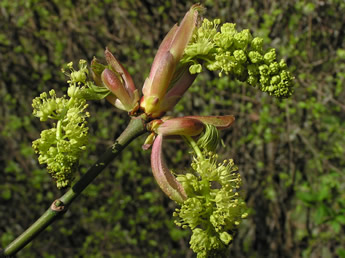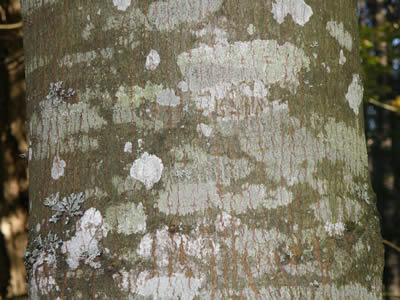|
| |
 |
_____Broadleaf Trees with Opposite, Simple Leaves |
| |
The Bigleaf Maple, Acer macrophyllum
|
| | |
Found in the moist forests of the Pacific coast west of the Cascades
and growing 30-80 ft/ 10-24 m high, the Bigleaf Maple is a stunning tree.
|
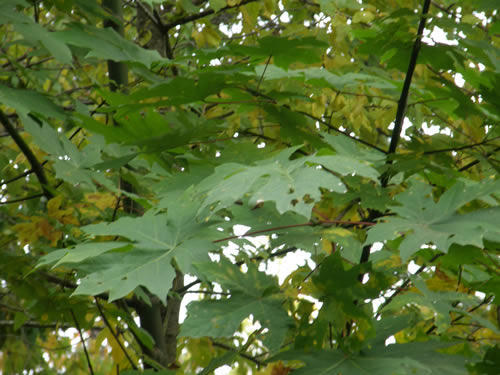 |
Although not the tallest of trees, it is the biggest of the maples with its broad, rounded crown. |
| | |
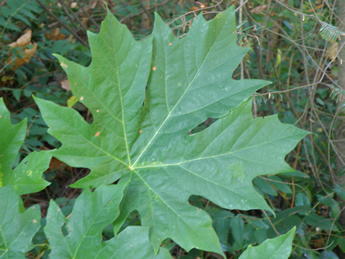 |
|
The leaves of the Bigleaf maple are the largest of any maple tree. They have 5 lobes and measure 6-12 in/ 15-30 cm long and wide on a 8-12 in/20-30 cm long stalk. The springtime flowers (above right) are greenish-yellow and fragrant. They hang in a clusters. |
| |
|
 |
|
Sometimes the leaves of maples get infected by a fungus called Tar Spot of Maple, Rhytisma punctatum. This usually occurs in the autumn, just as the tree is losing its leaves. It does little damage to the tree. The young bark is greenish (above right) becoming ridged and grey-brown with age. Often the bark and branches of the Bigleaf Maple are covered in mosses and lichens. |
| |
|
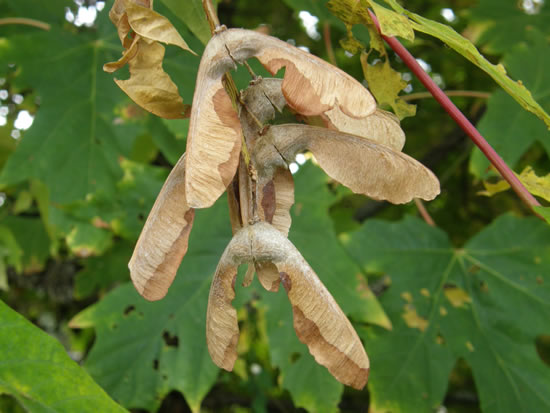 |
The fruit is in the form of a pair of winged seeds called samaras. Gradually the seed pods will dry up. In the autumn the leaves will turn orange or yellow-brown. |
|
| | |
|
|
|
| |
| Dereila Nature Inn Home > Woodlands Pathway > Walking in the Wild > The Bigleaf Maple |
|





